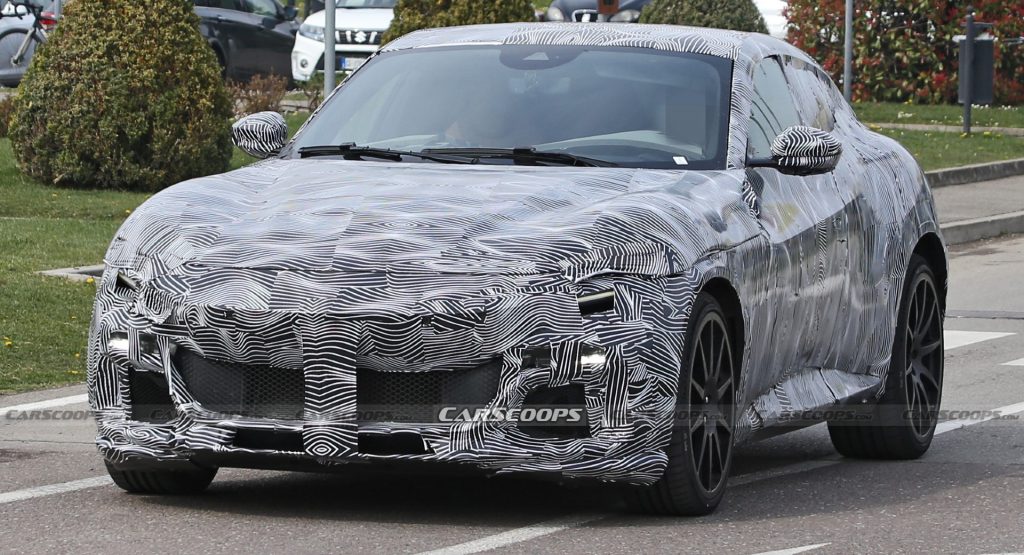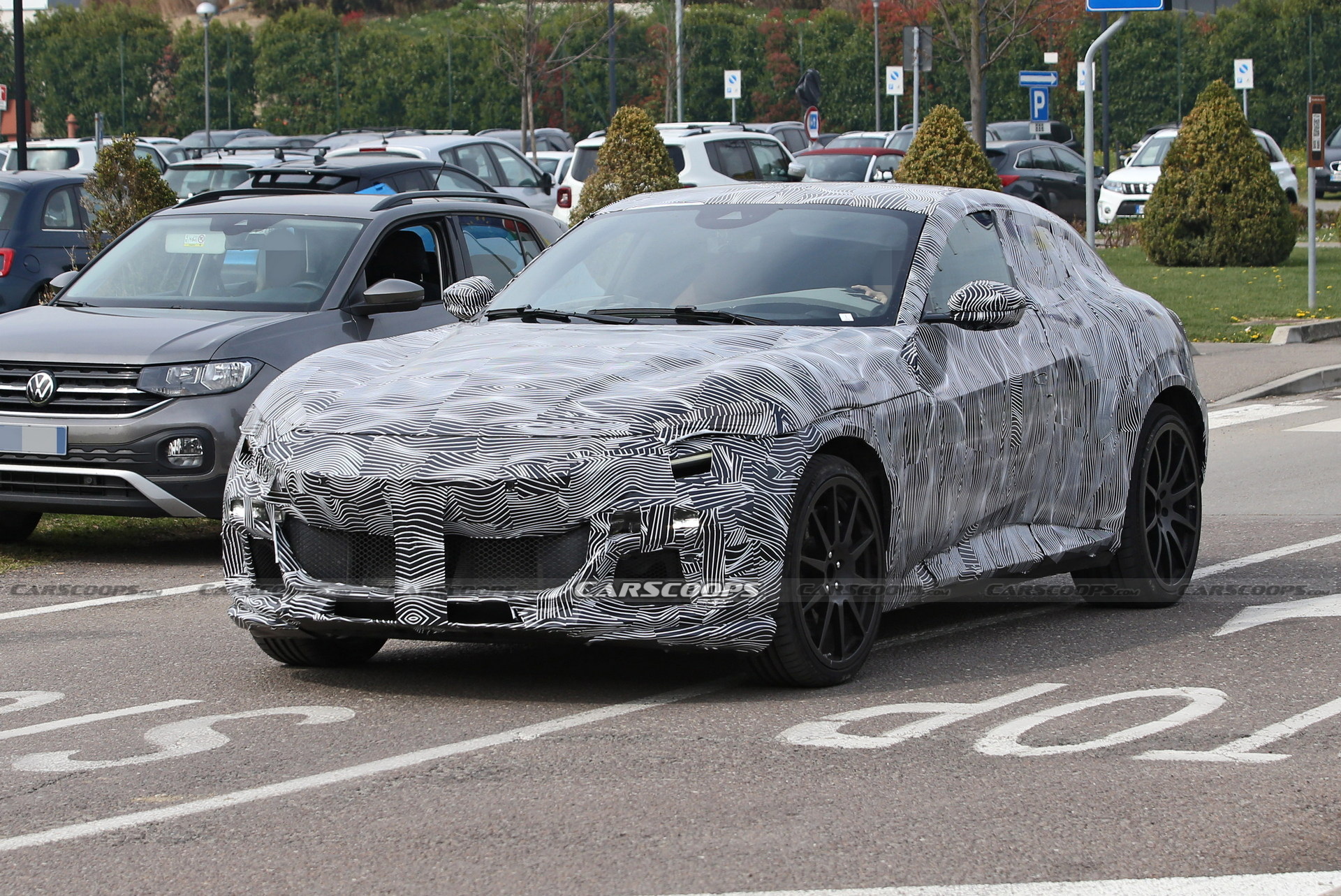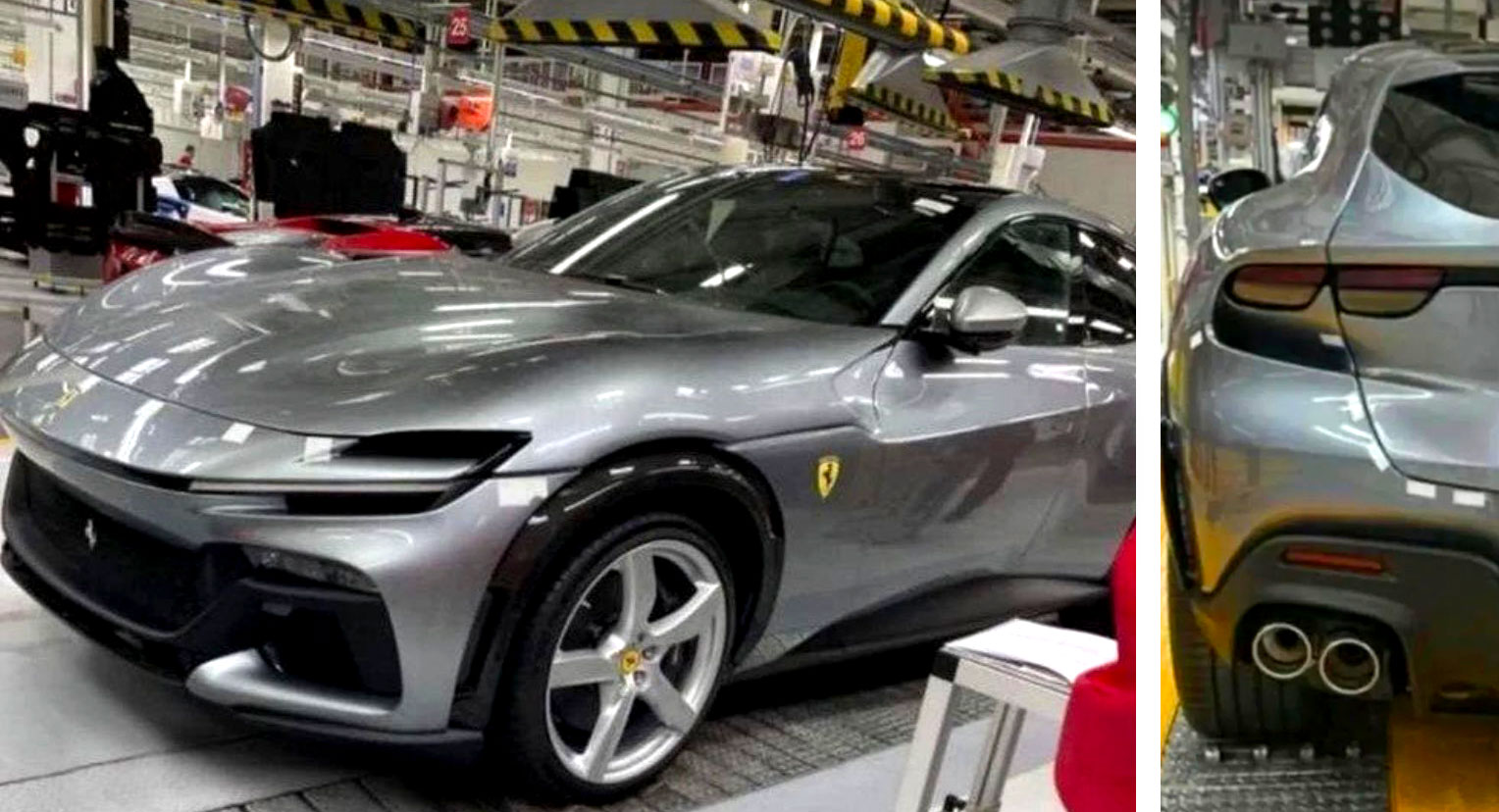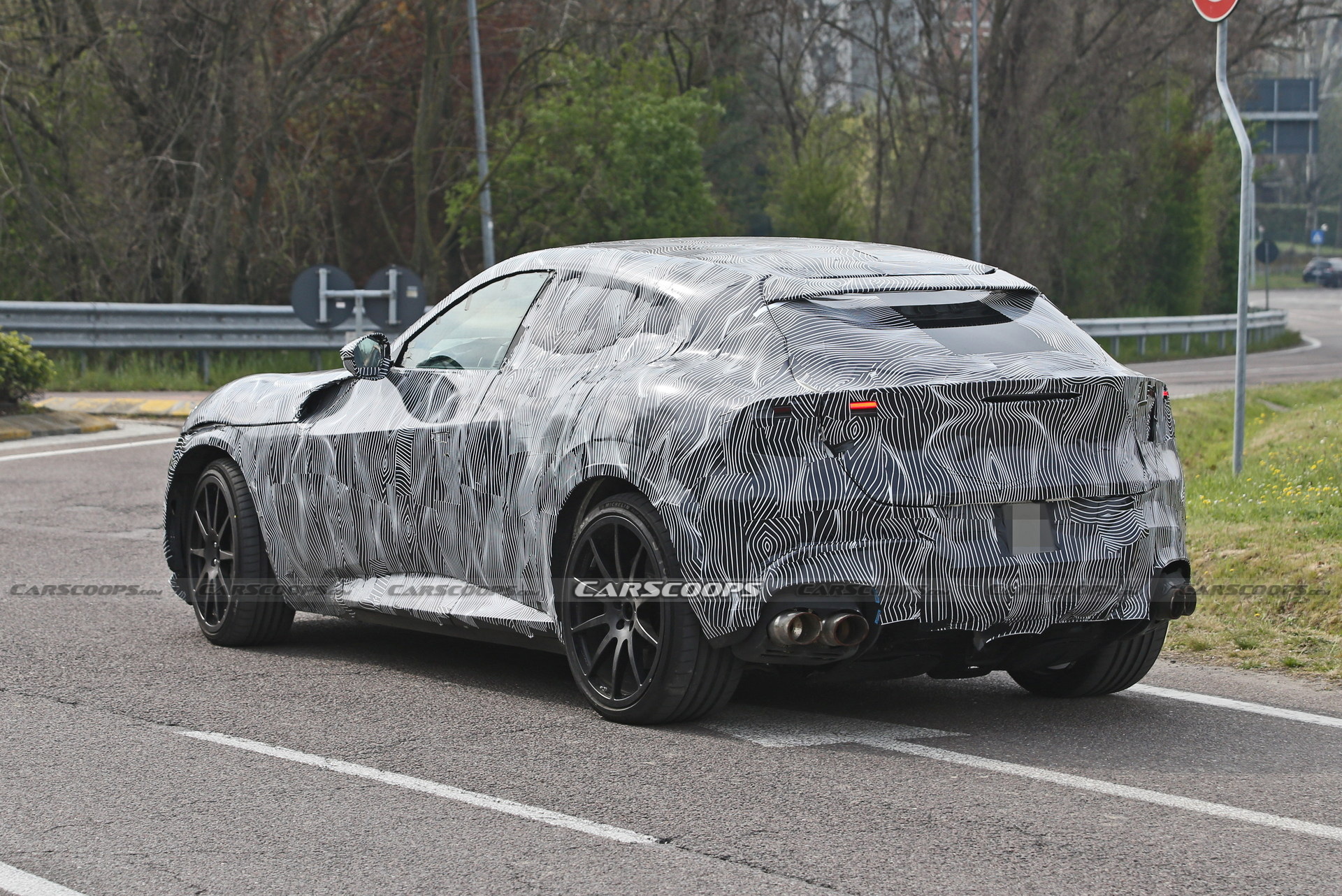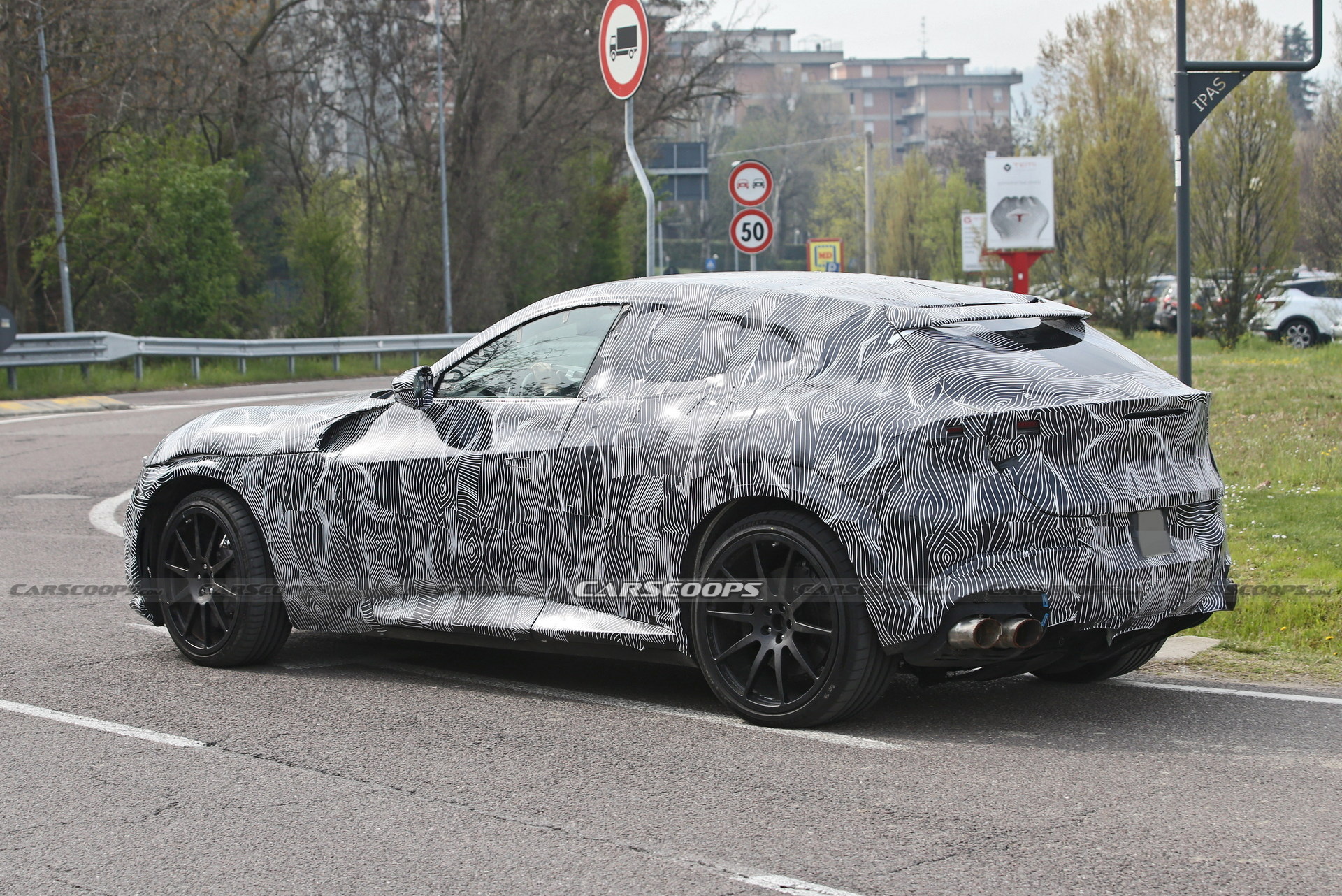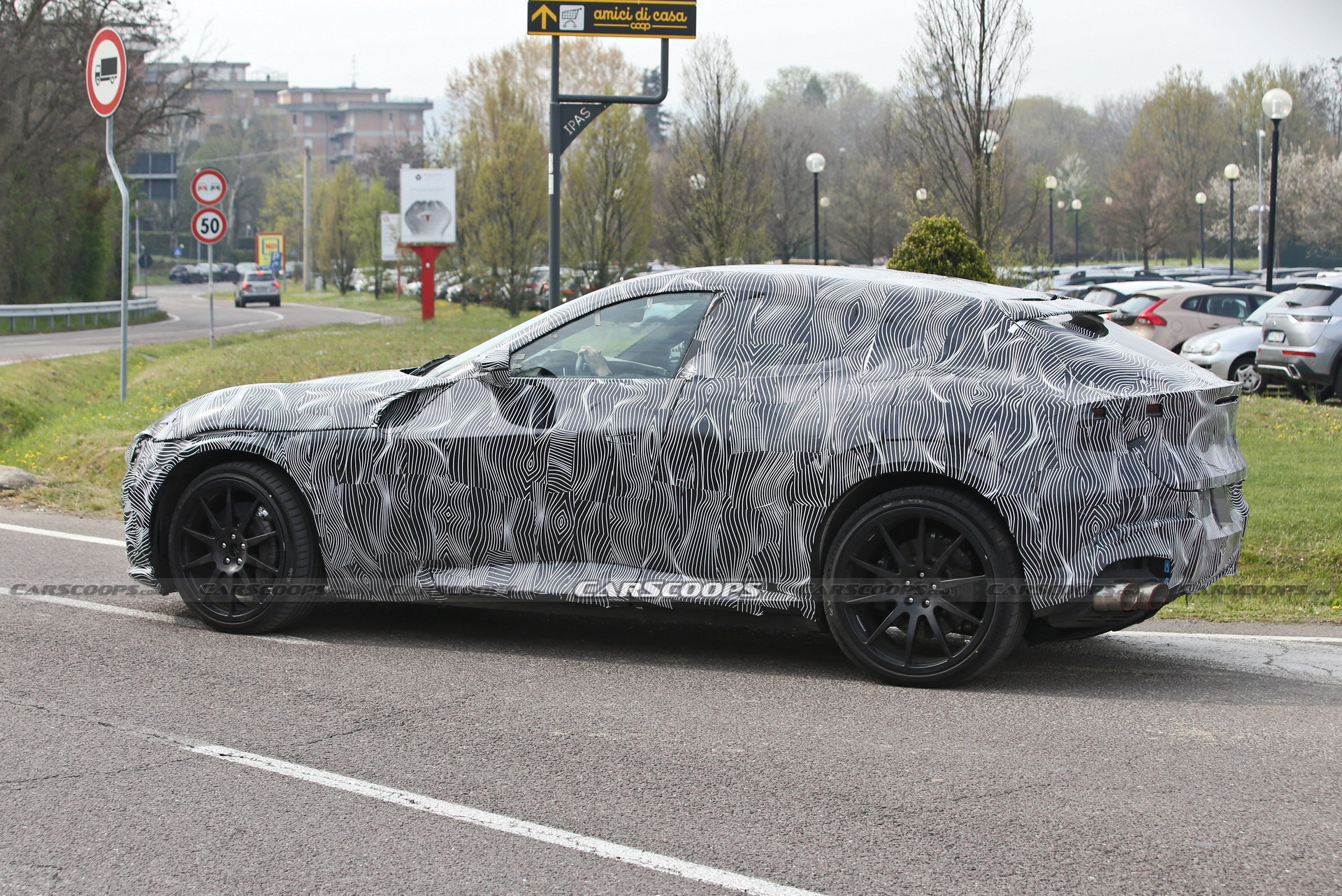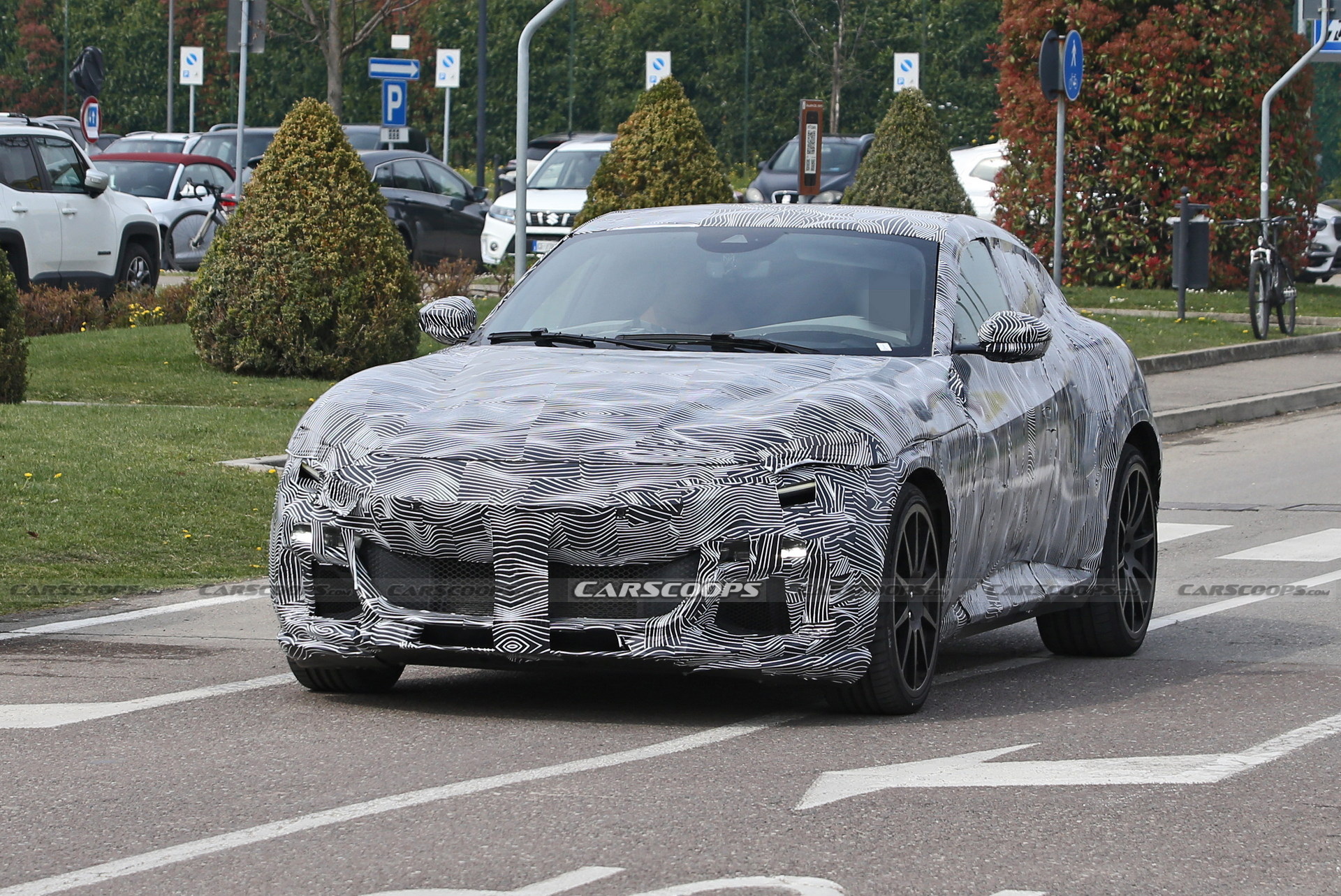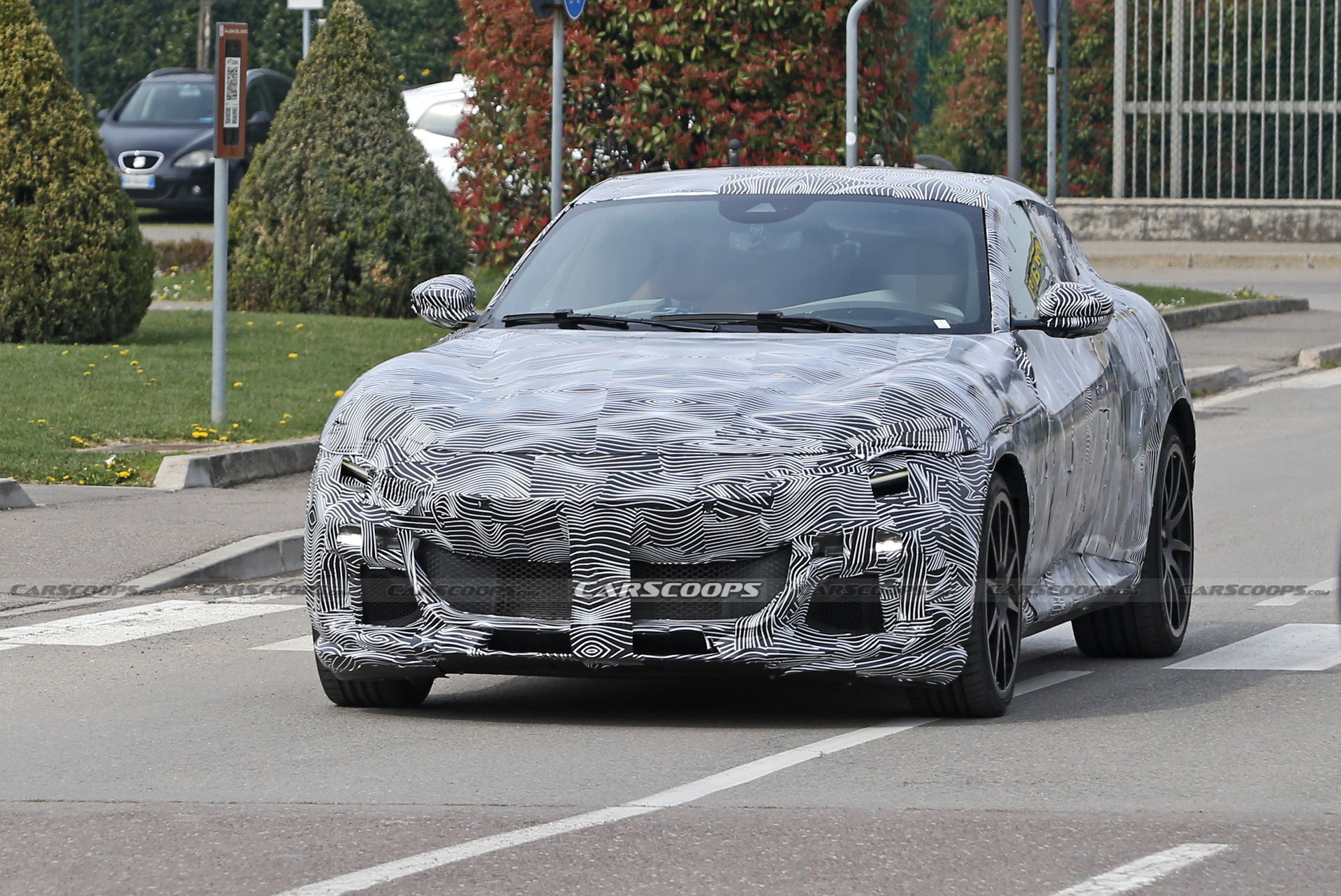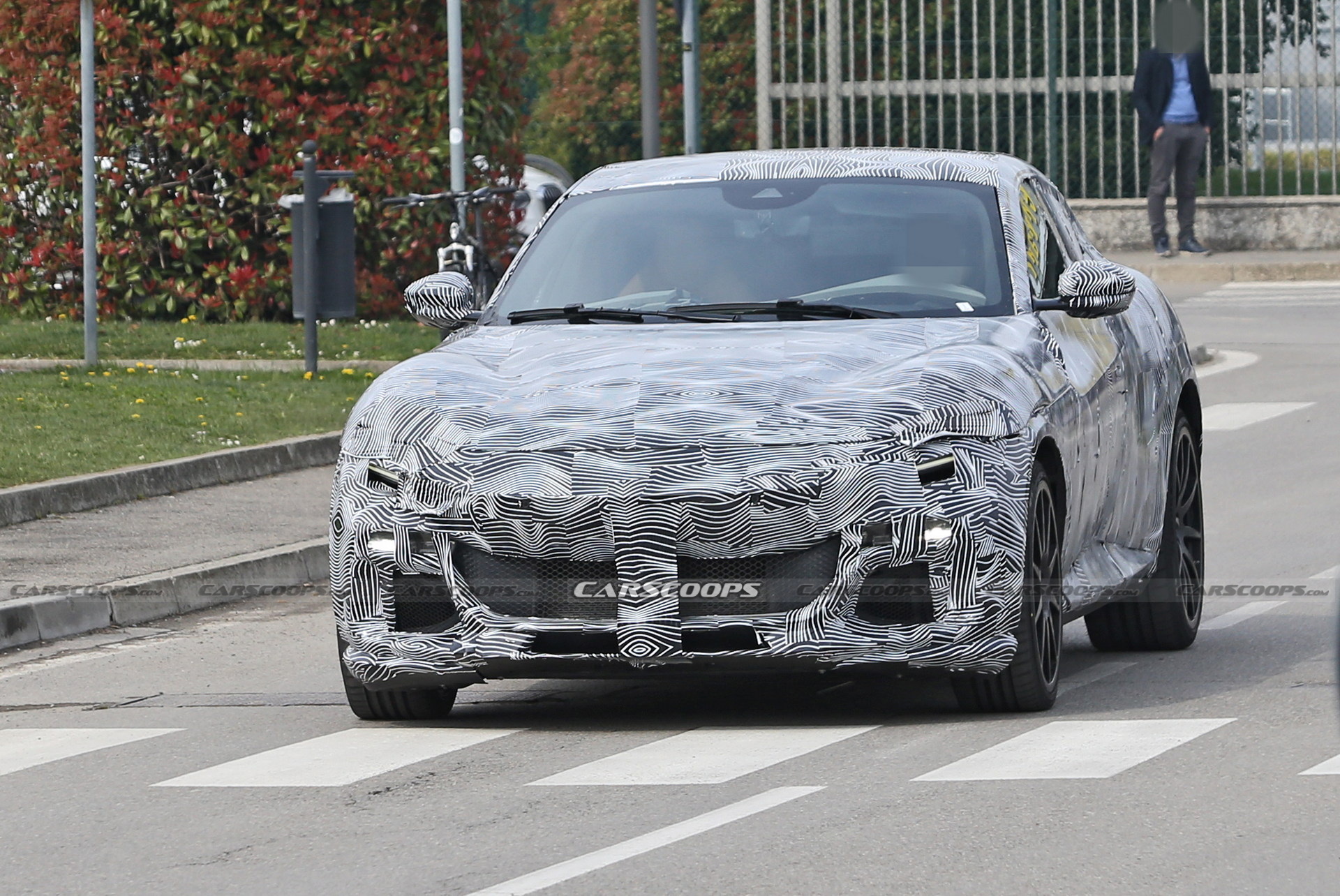A lightly camouflaged prototype of the Ferrari Purosangue was caught testing in Italy, following the official and quite revealing teaser from last month.
The first high-riding model from Maranello has shed the bulky camouflage of previous prototypes, confirming that the leaked photos from February were indeed showing the real thing. The Purosangue is now covered by a thin layer of wrap revealing the curves of the sculpted body and the intakes on the bumper and front fenders.
See Also: Buy This LaFerrari Prototype And Live Out Your Supercar Test Driver Fantasies
The test car is fitted with a set of black ten-spoke wheels and sports a rear spoiler and quad tailpipes mounted on the diffuser. We can also see a small portion of the LED taillights below the heavily inclined rear glass, and some plastic cladding on the side sills.
The Ferrari Purosangue appears to have a compact footprint when compared with the humble Volkswagen T-Cross that is parked in the background. It looks too wide and too low for an SUV with an aerodynamic silhouette and pronounced rear shoulders. Still, it is taller and larger than any Ferrari model which in combination with the five-door bodystyle and the higher ground clearance will also make it the most practical.
In terms of powertrain options, there has been speculation about a hybrid setup, in line with Ferrari’s electrification strategy. What we don’t know yet, is whether it will get the twin-turbo 2.9-liter V6 from the 296 GTB, or the twin-turbo V8 from the SF90 Stradale, while there are also rumors about a top-of-the-range variant with the naturally aspirated 6.5-liter V12. In any case, the model is expected to feature all-wheel-drive capability, sophisticated electronic systems, and very high output placing it at the top of the performance SUV pyramid.
The new Ferrari Purosangue will debut sometime in the coming weeks/months with deliveries expected to start in 2023. Rivals will include the upcoming facelifted Lamborghini Urus which will also be electrified, the recently revealed Aston Martin DBX707, and to an extent the fully electric Lotus Eletre.




